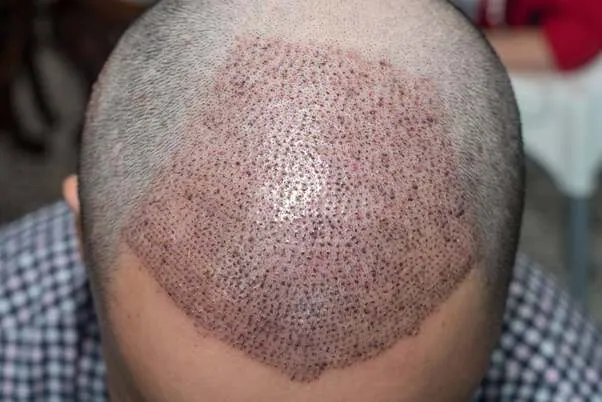
Post-Operative Instructions for Hair transplant
Hair transplant is a highly delicate procedure that is performed to implant the follicles in the recipient area after taking from the donor area. This is an effective procedure to overcome baldness.
Hair transplant is a highly delicate procedure that is performed to implant the follicles in the recipient area after taking from the donor area. This is an effective procedure to overcome baldness. After taking the treatment, you need to be highly conscious and have to adhere to all the post-operative guidelines instructed by your surgeon.
You can expect optimal results only if you take care of the recovery phase and it will certainly help you to avoid all the possible complications. Here, in this article, we will make you familiar with some common steps instructed by the surgeons to take after the procedure till your recovery period gets over.
The very first week after the surgery is quite a crucial time so it would be wise to abide by the below precautions with firmness:
1. Medicines
The surgeon will strictly advise you not to mess with your recipient area, as there will be some tenderness in the scalp for a few days after the surgery. You may experience discomfort and pain initially. Your surgeon will prescribe you some pain-relievers, antibiotics and anti-inflammatory pills to minimize the discomfort and pain.
2. Bandages
You will be having bandages on the treated area after the surgery, which you can take off after a few hours or before sleeping. This will help you to avoid swelling. You should not bend over for at least 48 hours to avoid bleeding and swelling.
3. Bleeding
Do not worry if you experience some leakage or bleeding from the donor or even recipient area. However, in case of excess or constant bleeding, you need to apply pressure to the bleeding area till it stops or visit the doctor.
4. Swelling
In general, swelling begins at the hairline and it gradually moves down to spread around the eyes, cheeks and nose. Your surgeon may advise you to apply ice to give cold compression for 15 minutes and at least for 4 times in a day and for the first 3 or 4 days. It is an effective preventive measure. You can continue to ice even if you don’t notice swelling for 3-4 days.
5.Itching
You may experience an itching sensation in the implanted and the donor area. It is a part of the healing process. Your surgeon will advise you to use baby oil to get the relief. He may also instruct you to not scratch at all, as it can cause the loss of implanted grafts.
6. Sleep
From the day of the surgery to the next five days, you need to sleep carefully in a manner that your pillow and implanted area do not touch each other. The donor area can however touch the pillow without any problem. Your head must be high, which will need you to use two or three medical pillows. Remember to spread an absorbing cloth on the pillow so that it absorbs wound leakage.
7. Shower
You should give time to repair the hair follicles. To avoid its loss, avoid doing shampoo at least for the next 72 hours. Someone from the medical staff will wash your scalp with a specific method by using lukewarm water. Your surgeon will guide you with the washing method that you should follow for the next ten days.
Your shampoo must be very mild and you should not rub your scalp roughly to remove the crusts in a day or two. You will be advised to use the towel in a very gentle way on your scalp. Your surgeon will also prescribe a solution spray to use every two hours.
8. Exercise and smoking
You should not smoke or consume alcohol for at least three weeks after the procedure, as it can delay the healing process. You must also refrain from doing any exercise like weight lifting or any other rigorous exercise, as it can increase bleeding, swelling. At the worst, you may lose the grafts and it can even damage the hair follicles.
9. Redness of the recipient area
If you get the redness in the implanted area, you need not to worry because it is quite natural due to the scalp trauma. It will fade away on its own with time.
10. Numbness and Infections
You may feel temporary numbness in the treated area. It will go away within 6 to 8 weeks. If you are in contact with a dusty, unhygienic environment, you may catch infections which can be inflammatory as well. Therefore, it is mandatory to be in a clean and hygienic area and prefer using the antibiotic pills prescribed by your surgeon.
11. Daily Routine
You need to have proper rest after the procedure and stay in a comforting relaxing environment. Gradually, you can resume your normal activities. After 3 to 4 weeks you can start your daily routine as well.
12. Exposure to the sun
Make sure to avoid the sunlight at least for a month. Even later, try to use the suntan oils and a protective hat to avoid the direct sunlight on your implanted area. Do not rub or get any scratch on the treated area with the hat.
13. Blisters or cysts
During the first month after the surgery, it is quite common to notice some small blisters, as new hair grows and breaks through the layers of the skin. These blisters will disappear on their own with time. But if you notice more pimples with redness or some swollen pimples (cysts), prompt intervention of the surgeon is necessary.
14. Crust formation
It is quite normal but do not rub to get rid of it. Crusts will fall within a week or two after the surgery. You just need to be gentle with the crusts while washing your hair.
15. Comb or brush
For the first one week after the hair transplantation, the surgeon will instruct you not to comb or brush your hair. Later, you can start with the donor area but avoid touching the scalp. In any case, make sure not to touch, comb or brush the implanted area.
Your Recovery Period
The body of every individual responds differently to the surgery procedure. Therefore, your recovery phase depends upon the fact that how quickly your body accepts the treatment.
- If you follow the post-operative instructions with precision then transplants are minimally visible after a few days and they go undetected after 10 to 14 days.
- Do regular follow-ups and appointments with your surgeon. Make it certain that you don’t fail to attend any appointment, as they will have a thorough check on your progress. They may click photos as well. They can guide you with all the do’s and don’ts depending upon your recovery and progress.
- 3-4 MONTHS FOLLOWING SURGERY: This time period is called the active growth stage. When the transplanted hair first appears, it is immature, fine, thin, and light in color. In addition, some or all of the hair that might have shed begins to grow back.
- 6 -9 MONTHS FOLLOWING SURGERY: - You can expect to see considerable new growth. The new hair will be approximately two to three inches in length and the hair shaft will begin to thicken. Also, the incision in the donor area is healed, if you underwent an FUT procedure.
- 12-24 MONTHS FOLLOWING SURGERY: - The visual result continues to improve for up to 18 months-24 months and it is only after 18 months-24 months that the final aesthetic is typically achieved.
To get detailed information about hair transplant or to undergo the surgery from an experienced surgeon, you can always browse through our official website. Our robust database of expert cosmetic surgeons will help you to find out a feasible hair transplant expert in your preferred region.


Comments
Login & Write comment